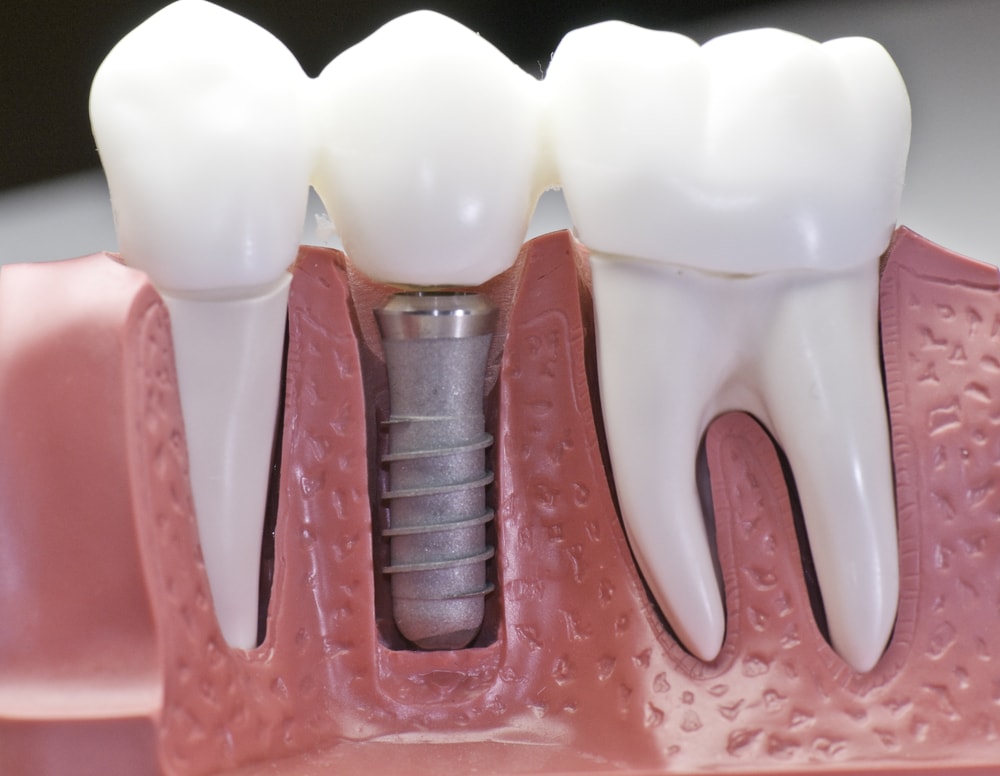Things about Dental Sense
Table of Contents10 Simple Techniques For Dental SenseTop Guidelines Of Dental SenseSome Known Details About Dental Sense Dental Sense Fundamentals Explained
are medical devices surgically dental implanted into the jaw to recover a person's capacity to chew or their appearance. They give assistance for fabricated (fake) teeth, such as crowns, bridges, or dentures. When a tooth is shed as a result of injury or condition, an individual can experience issues such as rapid bone loss, faulty speech, or adjustments to chewing patterns that lead to discomfort.Dental dental implant systems are composed of an oral implant body and oral implant joint and may also include a joint fixation screw. Kids dental. The dental implant body is surgically put in the jawbone instead of the tooth's origin. The dental implant abutment is usually affixed to the dental implant body by the abutment fixation screw and prolongs through periodontals right into the mouth to support the connected man-made teeth
(https://disqus.com/by/dentalsense1/about/)Structure of The Dental Implant System picking oral implants, talk with your oral copyright concerning the prospective advantages and risks, and whether you are a candidate for the treatment. Things to take into consideration: Your general wellness is an essential element in determining whether you are an excellent prospect for dental implants, the length of time it will take to recover, and exactly how long the dental implant may remain in location.
Smoking cigarettes may impact the recovery procedure and reduce the lasting success of the implant. The healing process for the dental implant body may take a number of months or longer, during which time you usually have a temporary joint instead of the tooth. the oral implant treatment: Thoroughly follow the oral health instructions offered to you by your oral copyright.
The Definitive Guide for Dental Sense
Implant failure can result in the need for one more operation to repair or change the dental implant system. Recovers the capacity to eat Brings back aesthetic look Aids maintain the jawbone from diminishing due to bone loss Preserves the health and wellness of the bordering bone and gum tissues Aids maintain adjacent (neighboring) teeth steady Improves top quality of life Damages to bordering all-natural teeth during dental implant placement Injury to the surrounding cells throughout surgical procedure, such as sinus opening Injury during surgery (as an example, crack of bordering jawbone) Poor function, such as seeming like the teeth do not attack with each other typically A sensation that the tooth is loosened or turning in area arising from an abutment screw loosening up Implant body failure (looseness of the implant body) because of systemic infection, which may be more probable in individuals with unchecked diabetes because of local infection in bone and gums supporting the implant body as a result of delayed recovery, which might be most likely in individuals that smoke Problem cleaning the gums around the implant, resulting in poor dental health Untreated periodontal disease Post-surgical feeling numb because of nerve impingement or damages Always inform healthcare service providers and imaging specialists that you have oral implants before any kind of magnetic resonance imaging (MRI) or x-ray procedures.
FDA is not mindful of any kind of adverse events reported for MRI or x-ray procedures with dental implants. Oral implants systems are normally made from materials that follow worldwide agreement criteria of the International Company for Standardization (ISO) or ASTM International. These standards have information of what makes a secure material.

A dental implant is a framework that changes a missing tooth. With screw-like tools, the surgeon inserts a dental implant into the jawbone, and it acts as an anchor for a man-made tooth, called a crown. A tool called an abutment connects the man-made tooth to the dental implant. The crown is customized to fit the individual's mouth and match the color of their teeth.
Examine This Report on Dental Sense
Some people are not eligible for dental implant surgical procedure. It is for dental doctors to operate people with: severe illnessuncontrollable metabolic diseasebone or soft cells condition or infectionIf these problems are settled, an individual can have the surgical procedure. In, dental surgeons avoid running on people with: If individuals with any one of the above go through oral implant surgical procedure, there is a greater threat of the implant falling short.

Dental dental implant surgical procedure is a personalized process. It's not the same for everybody. However the following provides a basic review of what you can expect your dental professional, oral doctor, periodontist or prosthodontist to do: Place the implant operatively. Provide you time to recover. Connect the message and last crown, bridge or denture.
Next off, your cosmetic surgeon will carefully position the oral implant into your jaw. If your dental implant is near the front of your mouth, your dental expert will certainly make a momentary tooth for you to put on up until you heal.
Rumored Buzz on Dental Sense
Your provider can tell you what to expect in your scenario. Throughout the healing phase, your jawbone must fuse to the dental implant. This procedure, called osseointegration, is essential for security and lasting success. This procedure can take anywhere from 3 to nine months. In many cases, it might take longer.
When your implant heals, your dental expert can connect the joint (little connector blog post) and your final reconstruction (crown, bridge or denture). This generally takes concerning one hour to finish and might need a second minor surgery. You should not feel any kind of pain throughout your oral implant procedure since your copyright will certainly utilize drug to numb your periodontals.